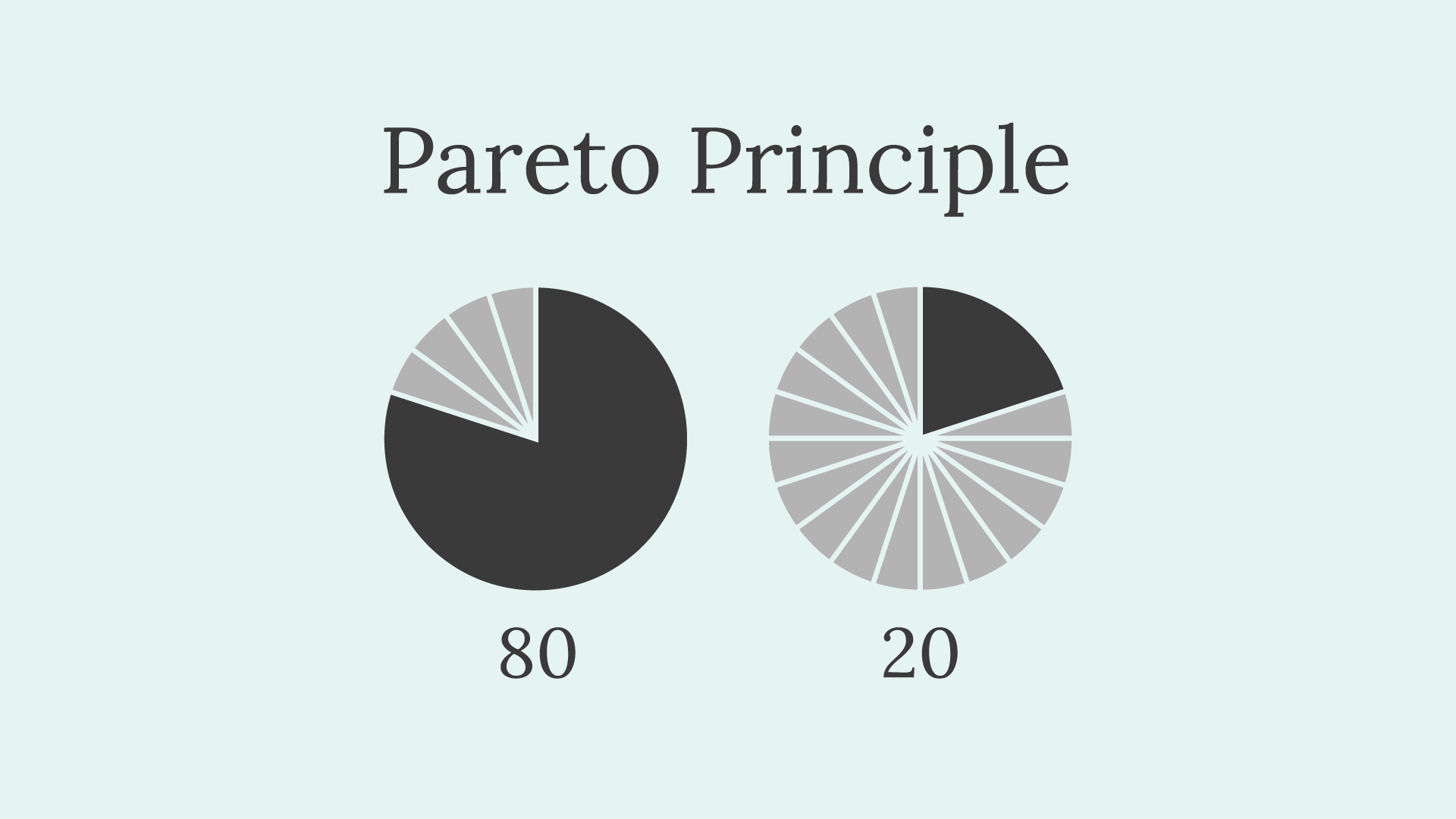|
Getting your Trinity Audio player ready...
|
In today’s fast-paced business landscape, where leaders are inundated with countless demands, the Pareto Principle (or the 80/20 rule) underscores the urgency of prioritization. For decades, strategic thinkers have observed that a minority of efforts often drive the majority of results.
Top-performing organizations take this lesson to heart by rigorously directing the bulk of their resources toward their most impactful initiatives, driving disproportionate value and growth.
This pattern, far from coincidental, reveals a fundamental principle that can transform how you approach decision-making, resource allocation, and productivity. But how do you identify that critical 20%? What does it mean to focus your energy effectively, and how can you systematically apply this insight to your work and organization? These questions challenge you to rethink your approach to leadership, strategy, and execution.
Definition of the Pareto Principle
The Pareto Principle is the observation that roughly 80% of outcomes result from 20% of causes, highlighting an unequal distribution of effort and impact across various domains.
What is The Pareto Principle ?
The Pareto Principle is the observation that roughly 80% of outcomes result from 20% of causes, highlighting an unequal distribution of effort and impact across various domains.
At its core, the Pareto Principle offers a lens through which you can understand that not all inputs contribute equally to outputs. Whether in sales, customer service, project management, or quality control, a small subset of factors typically drives the majority of results. The Pareto Principle is often used to highlight the most critical factors in business and economics.
Recognizing this enables you to prioritize solutions, allocate resources more strategically, and focus on the tasks and initiatives that yield the maximum amount of value.
Origins and Evolution: From Wealth Distribution to Business Strategy
The principle originated with Italian economist Vilfredo Pareto’s late 19th-century observation that 20% of Italy’s landowners controlled 80% of the country’s land. This unequal distribution was not an isolated phenomenon; Pareto observed similar patterns in other countries and even in his garden, where 20% of pea pods produced 80% of the peas. The Pareto Principle was developed by Italian economist Vilfredo Pareto in 1896.
Over time, this insight evolved beyond economics into a powerful framework for management and productivity, famously adapted by quality management pioneers to emphasize focusing on the “vital few” rather than the “trivial many.” Joseph Juran expanded the application of the Pareto Principle to management in the 1950s.
Applying the Pareto Principle to Your Work
You can leverage the Pareto Principle by identifying the priority tasks that generate the most impact within your role or organization.
Analyze Your Task List
Start by analyzing your task list or project portfolio to distinguish the 20% of activities responsible for 80% of your results. This requires a clear idea of what constitutes meaningful outcomes in your context; be it revenue generation, customer satisfaction, or operational efficiency.
Allocate Resources Effectively
Once identified, allocate your productive time and resources accordingly. Techniques such as time boxing can help you dedicate focused intervals to these high-impact tasks, ensuring you avoid distractions from less important tasks that consume your energy but yield limited returns.
Example: Focus on High-Value Clients
For example, a sales team might discover that 20% of their clients contribute to 80% of the company’s revenue, prompting a strategic shift to nurture those relationships more intensively. Similarly, 80% of a company’s profits often come from 20% of its customers according to the Pareto Principle.
Prioritizing Solutions to Resolve Multiple Problems
In problem-solving scenarios, the Pareto Principle guides you to prioritize solutions that address the root causes behind most issues. By categorizing problems into similar groups based on related errors or underlying factors, you can develop one solution that resolves multiple problems simultaneously. This approach not only maximizes efficiency but also prevents the dilution of effort across less impactful issues.
For instance, in quality control, Pareto analysis helps identify the most reported bugs or defects that cause the majority of failures. Addressing these critical errors first can dramatically improve product reliability and customer satisfaction.
Balancing Focus: Avoiding the Common Misconception
A common misconception is that the Pareto Principle implies you can achieve 80% of results with only 20% of effort. In reality, the principle reflects the distribution of causes and effects, not the amount of effort required. To realize 80% of the outcomes, you still need to invest full effort into the critical 20% of tasks. Common criticism is that the Pareto Principle is an observation, not a precise law.
Moreover, maintaining the right balance involves managing the rest of your responsibilities effectively, ensuring that less important tasks are handled efficiently without detracting from your focus on specific initiatives.
The Role of Artificial Intelligence and Data Analytics
Modern advancements in artificial intelligence and data analytics enhance your ability to apply the Pareto Principle by providing deeper insights into complex data sets. AI tools can sift through vast amounts of information to identify patterns and highlight priority tasks or key areas for improvement.
This capability allows for more precise resource allocation and continuous optimization of processes, reinforcing the principle’s relevance in today’s digital economy.
Conclusion: Harnessing the Pareto Principle for Strategic Impact
Mastering the Pareto Principle empowers you to work smarter by focusing on the priority tasks that produce the majority of your results. By identifying and dedicating your most productive time to the vital few activities, you can increase productivity, save time, and allocate resources more efficiently.
This approach helps you create manageable segments of work, prioritize solutions that resolve multiple problems, and maintain clarity and focus on your most important tasks. Remember, the Pareto Principle is a powerful tool and strategic guide (not a rigid formula) that supports better decision-making, improved operations management, and enhanced business management.
As you apply these insights, critically assess your current initiatives, stay focused on what truly matters, and recalibrate your efforts to unlock your organization’s full potential and drive sustained growth.
Frequently Asked Questions (FAQ)
What is the key benefit of using the Pareto Principle in business?
The key benefit lies in its ability to help you identify and prioritize the small subset of tasks, customers, or issues that generate the majority of your results. This focus leads to increased efficiency, better resource allocation, and higher overall productivity.
How can I apply the Pareto Principle to time management?
Start by analyzing your daily or weekly task list to pinpoint the 20% of activities that contribute most to your goals. Use techniques like time boxing to dedicate focused periods to these priority tasks, reducing time spent on less important activities.
Can the Pareto Principle be applied to problem-solving?
Absolutely. By grouping related errors or issues, you can prioritize solutions that resolve multiple problems at once, maximizing the impact of your efforts and improving quality control.
Is the 80/20 split always exact?
No, the 80/20 ratio is a guideline rather than a strict rule. The actual distribution may vary (e.g., 70/30 or 90/10), but the underlying concept of unequal distribution remains consistent across contexts.
How does artificial intelligence enhance the application of the Pareto Principle?
AI and data analytics help identify patterns and priority areas more accurately by processing large datasets quickly. This allows for more informed decision-making and efficient allocation of resources aligned with the principle.



